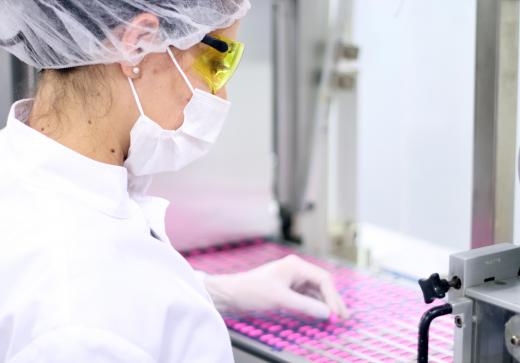A chlorinated solvent is an organic compound that has at least one chlorine atom or chlorine group bound to it in a covalent bond, where electrons are shared between atoms. Other common names for a chlorinated solvent chemical include a chlorinated hydrocarbon or organochloride. They have a wide range of industrial applications and, in certain forms, are controversial. Dioxins are a form of chlorinated solvent that have been proven to be the single most toxic, carcinogenic substance ever created by man. Some dioxin compounds, however, can also be generated as a result of natural processes, such as forest fires.
Since chlorinated solvent compounds are miscible in water and do not have normal flash points where they can catch fire, they have a wide range of practical industrial uses. They also possess a structure that can be easily altered to produce a diverse array of chemical properties. This makes them useful in four broad areas. They are a class of solvents useful for degreasing and cleaning applications, and are propellants for fire extinguishers or foam blowing. In addition, the compounds are also intermediate chemicals for the manufacture of plastics and resins, and serve as an efficient heat exchange gas in environmental systems.

The most commonly produced chlorinated solvent is vinyl chloride gas, C2H3Cl, and 95% of global production of the chemical is targeted to the manufacture of polyvinyl chloride (PVC), a plastic widely used in plumbing pipe and other industrial applications. Vinyl chloride was also once a widely used refrigerant chemical and propellant in cosmetic and pesticide aerosols. Since it is toxic to human beings by all routes of exposure including inhalation and skin contact, these uses of the compound have been banned in most nations.

Organochlorine compounds such as vinyl chloride are also used to produce solvents, with around 10,000 metric tons per year of the chloromethane of 1,1,1-trichloroethane derived from vinyl chloride. Trichloroethane and trichloroethylene are employed to clean metals, or as an ingredient in specialty adhesives. Annual global production of vinyl chloride in 2005 was at 32,624,000 metric tons, which is up from around 18,000,000 metric tons produced in 1985. The major national producers are the US at nearly 9,000,000 metric tons, Western European nations at 6,650,000 metric tons combined, and China and Japan, which each produce over 3,000,000 metric tons annually.

Two other principal chlorinated solvent chemicals are methylene chloride, used in food and pharmaceutical manufacturing as well as paint stripping, and perchloroethylene that is widely used in the dry cleaning industry. US manufacturers sell chlorocarbons in forms that can be used for everything from hydrochlorofluorocarbons (HCFCs) designed as a short-term replacement for ozone depleting chlorofuorocarbons (CFCs) to degreasing chemicals, and to create urethane foam. The chlorinated solvent of tetrafluoroethane is also used as an ingredient in the manufacture of Teflon® for non-stick cooking surfaces.
